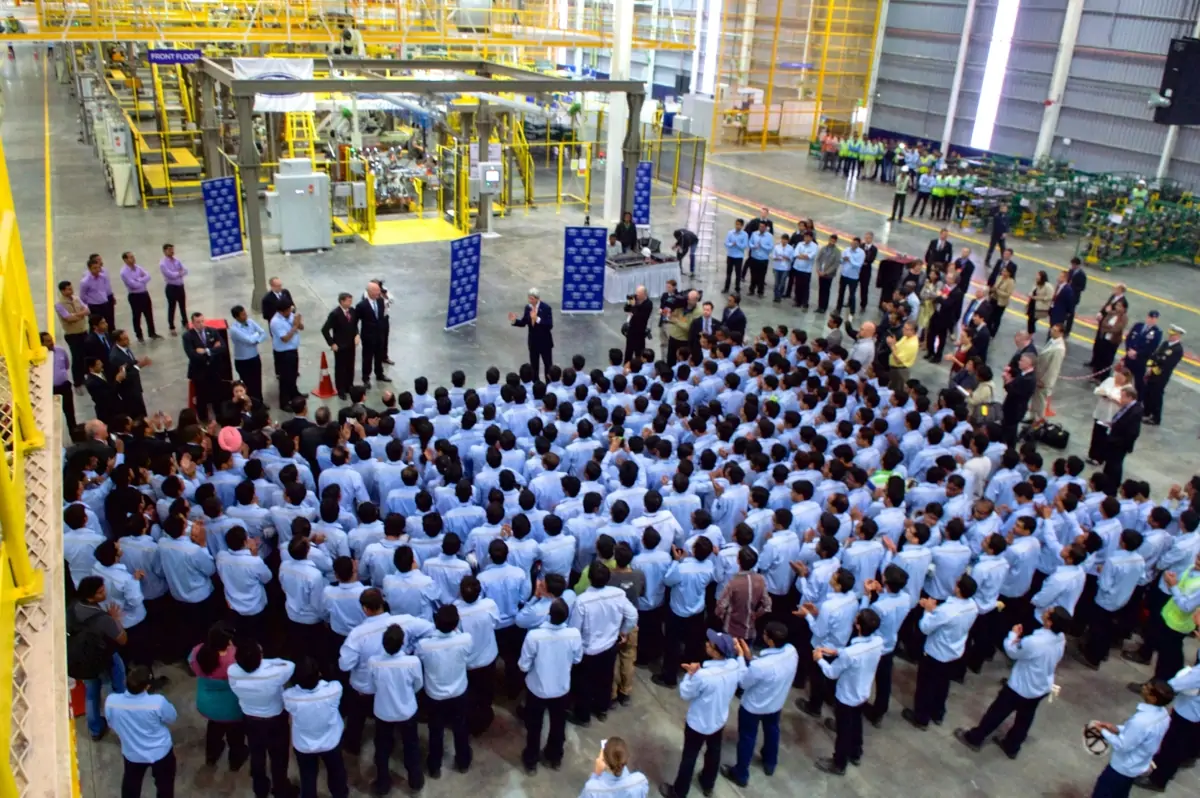Many countries go through similar processes in the development phase: As they develop, women’s participation in the workforce also increases, which accelerates the development of the country. The same process took place in the second half of the 20th century in China, Japan, and South Korea. But India, which surpassed the United Kingdom to become the world’s 5th largest economy last year, does not follow this path. Moreover, the proportion of women in the workforce has been declining since 2000. Experts are of the opinion that if women’s participation in business life increases, India’s economic development will fully accelerate.
Women’s labor force participation in India peaked at 31 percent in 2000. According to data from the World Bank, this rate was measured as 24 percent last year. 24 percent makes India the 12th country with the lowest female workforce. Among the 12 countries in question are Afghanistan and Somalia. The female employment rate in Saudi Arabia is higher than in India.
More women of working age than the total EU population
According to economists, there are two reasons for this. The first is the scarcity of employment. The scarcity of choice creates a serious competition among job seekers. Second, the cultural norms that “women’s place is in the home” are very strong.
 The number of women entering the workforce in India is declining. Photo: Wikimedia Commons
The number of women entering the workforce in India is declining. Photo: Wikimedia CommonsAlthough India has been the fastest growing economy in recent years, the net of new jobs in the last 10 years is zero. The fact that women cannot be included in the workforce in India is also a financial disadvantage for India in an environment where Western countries are turning to alternatives in production other than China.
Let’s look at the data: data from the McKinsey Global Institute, India’s GDP would be $734 billion if the female workforce increased by 11 percent by 2030. reveals. The country’s GDP was about $3.4 billion last year, according to the World Bank.
According to the Mumbai-based think tank, Center for Monitoring the Indian Economy, Last year, only 38 million women were employed compared to 368 million men. The number of women of working age in India is 470 million. This number is even more than the entire European Union population.
Companies in India cannot find female employees
Anamika Pandey, 26, one of the women entrepreneurs of the capital New Delhi, said that the cultural pressure is very intense, that women’s work outside the home is seen as something only for the poor and is condemned.states.
Pandey, who founded a natural food company last year, states that he wants to hire female employees in the storage, transportation and sales departments, but that women are hesitant because of social pressure.
The young business woman emphasizes that as a result, she had to hire men for all these jobs and that she was able to employ up to 500 women only for sales to be made through social media without leaving the house, and it was very difficult for her. “Sometimes I had to sit down with all the family members and convince them, ‘Look, he doesn’t have to leave the house for this job,’” she says.
 According to experts, increasing job opportunities can help to break down prejudices in society. Photo: Freepik
According to experts, increasing job opportunities can help to break down prejudices in society. Photo: FreepikAnmol Jaggi is one of the founders of the shared ride-hailing application BluSmart. Pointing out that he wants to employ female drivers since 50 percent of the customers are women, Jaggi says that the company announced that it will hire 500 female drivers within a year.
Pointing out that the company has also started a driving and driving license training program for women in cooperation with the Indian government, Jaggi underlines that they put 3 emergency buttons in each vehicle due to safety concerns, that women will only work during the day shift and they will be on duty around crowded metro stops.
‘Creating jobs can break prejudices’
Stating that 80 of the 800 women who applied at the end of the program learned to drive and started to work, more women wanted the job but their family members objected, Jaggi points out that the number of male drivers in the company is 6,500. Most of the female drivers working at BluSmart are single mothers, such as Deepa Shankar, who work despite the objections of her family.
Shankar, 25, started working after leaving his wife, baby and himself. Saying that his mother, brother and neighbors blamed him and forced him to quit his job, Shankar says, “They said I was tarnishing our family’s name.” But Shankar’s income made them change their minds too. Shankar, who paid for his father’s treatment expenses with his income, built a house for his mother and paid for his brother’s education loan, says that he earns $490 a month and adds: “Everyone is happy with my work now.”
Jaggi’s dream of reaching the thousands of female drivers in the company seems far away for now. “I may have to work my whole life to reach this goal,” says the entrepreneur.
Economists say that a job boom that may occur in India will ensure that prejudices against women’s work in society are eliminated.
Sources: The Wall Street Journal, The Economist







